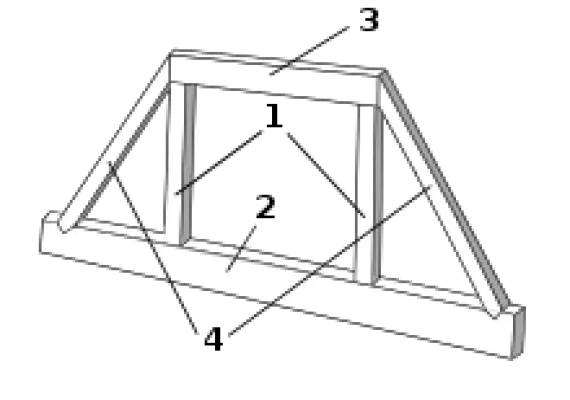What Is Structural Dampness? What Are Causes Of Dampness In Building?
What Is Structural Dampness?
Structural dampness is a term used to describe the presence of moisture in the walls, floors, and ceilings of buildings.
It is caused when water penetrates into masonry and other structural materials such as timber and plaster, causing damage and promoting the growth of mould.
Structural dampness can come from various sources including rainwater penetration, rising or lateral dampness, condensation or plumbing leakages.
Damp problems cause structural damage such as wood decay, fungal growths, rotting timbers and rusting fixtures. This can lead to serious health issues if relevant action isn’t taken.
Is Damp A Structural Problem?
Yes, damp is definitely a structural problem. It can cause problems such as dry rot, mold, warped wood and other issues that can damage the structure of a building or home.
Not only will damp weaken wooden structures, but it will also negatively affect masonry and brickwork as well. As moisture accumulates over time, it causes materials to become weak and brittle.
Additionally, water droplets on walls or ceilings come from rising damp, which is caused by moisture rising up through the foundation of a building or home. This can result in weakened structural integrity if left unresolved for too long.
What Are Causes Of Dampness In Building?
Dampness in buildings can be caused by a range of factors, including structural defects and condensation.
Structural defects such as inadequate roof and wall insulation, defective window frames, porous walls or cracked masonry can all allow moisture to penetrate and cause dampness.
Condensation occurs when warm, moist air comes into contact with cooler surfaces such as walls or windows.
This can be further exacerbated by high levels of humidity in the home, poor ventilation and the presence of unvented appliances such as tumble dryers or shower enclosures.
Poor construction techniques or the use of inappropriate materials can also be responsible for damp issues.
In general, damp problems become more pronounced in warmer seasons due to increased temperatures leading to greater air movement and moisture absorption within a building fabric.
What Are The 4 Types Of Damp?
Damp is a common issue in many homes which can lead to various problems, such as the growth of mold and mildew.
There are four main types of damp: rising damp, penetrating damp, condensation, and lateral damp.
- Rising damp occurs when ground moisture rises up through walls due to poor or missing walling material.
- Penetrating damp is caused by water entering through external sources such as roof damage or cracks in brickwork.
- Condensation is the result of high levels of moisture accumulating on cold surfaces, which leads to water droplets forming on windows or inside walls.
- Lateral damp is where a wall’s boundary has been breached by either groundwater seepage or a leaking pipe causing moisture build-up within interior walls over time.
How Do You Fix Dampness In A Building?
To fix dampness in a building, the first step is to identify the source of moisture. This could be from outside sources like rain runoff, or from inside sources such as excess humidity or plumbing leaks.
Once the source of moisture is identified, it should be addressed by plugging any leaks, replacing missing insulation and check seals around windows and doors.
If the moisture is coming from underground, you should look into installing a waterproof membrane system.
Additionally, you can use dehumidifiers to help reduce interior humidity levels and exhaust fans to help ventilate humid areas.
Finally, it’s important to maintain adequate ventilation and regularly inspect your home for signs of mold which could indicate a more serious underlying problem that needs to be addressed.
How Do You Stop Rising Damp In Old Buildings?
Rising damp is a common issue in older buildings, caused by water coming through the walls and floors.
To stop rising damp, it is important to reduce the source of dampness and improve insulation. This can be done by fixing any external sources of water entry, like leaking drains or gutters, repairing any cracked or broken walls that are allowing water to seep in and improving ventilation.
Internal remedial measures include installing a chemical damp proof course, creating a physical barrier between the two different levels of wall construction (old and new bricks) with an impermeable membrane such as polythene and finally fitting a specialist salt retardant capillary break at floor level.
If these methods are all implemented properly then rising damp can be stopped in old buildings.

